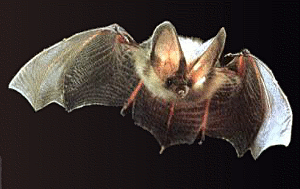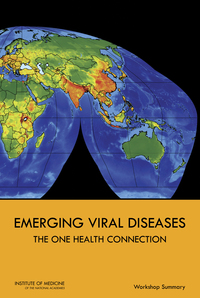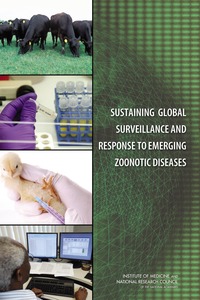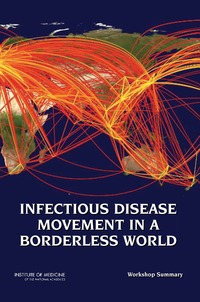 Bats are the most populous mammal—with more than 1,200 species representing around 25% of all mammal species—and are found in all parts of the world except for the North and South poles and some remote islands. Although they carry a number of viruses without symptoms (e.g., SARS, Hendra, Nipah, and Ebola), little is known about their response to disease. The Institute of Medicine’s new report Emerging Viral Diseases discusses the use of nontraditional animal models — like bats — to study the development of disease, host-virus relationships, and the nature of the immune responses to particular diseases.
Bats are the most populous mammal—with more than 1,200 species representing around 25% of all mammal species—and are found in all parts of the world except for the North and South poles and some remote islands. Although they carry a number of viruses without symptoms (e.g., SARS, Hendra, Nipah, and Ebola), little is known about their response to disease. The Institute of Medicine’s new report Emerging Viral Diseases discusses the use of nontraditional animal models — like bats — to study the development of disease, host-virus relationships, and the nature of the immune responses to particular diseases.
As human and animal populations grow and encroach on each other’s habitats, the likelihood of zoonotic diseases increases. Changes in climate and rapid movement of increasingly more people and goods around the world make infectious disease more difficult to contain. Reports from the Institute of Medicine address the challenges of surveillance and response to these threats. All are free to download.
In the past half century, deadly disease outbreaks caused by novel viruses of animal origin – Nipah virus in Malaysia, Hendra virus in Australia, Hantavirus in the United States, Ebola virus in Africa, along with HIV (human immunodeficiency …
One of the biggest threats today is the uncertainty surrounding the emergence of a novel pathogen or the re-emergence of a known infectious disease that might result in disease outbreaks with great losses of human life and immense global economic …
H1N1 (“swine flu”), SARS, mad cow disease, and HIV/AIDS are a few examples of zoonotic diseases-diseases transmitted between humans and animals. Zoonotic diseases are a growing concern given multiple factors: their often novel and unpredictable …
Modern transportation allows people, animals, and plants–and the pathogens they carry–to travel more easily than ever before. The ease and speed of travel, tourism, and international trade connect once-remote areas with one another, eliminating …



